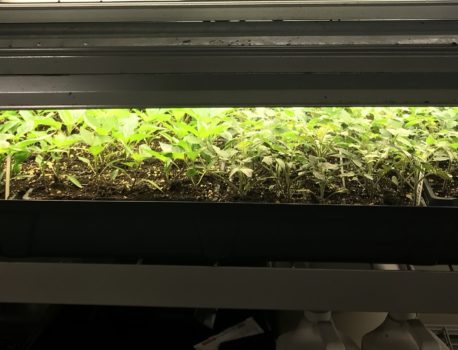Nothing beats full suns when it comes to growing plants. However, there often isn’t enough natural light available on a windowsill to grow good quality transplants. I highly recommend using supplemental lighting if your plants are not going to be in direct light for most of the day (we’re talking 10+ hours).
If you are lucky enough to have a south-facing sunroom with little to no shade, the rest of us are jealous. You should be fine. Everybody else: consider a lighting system!
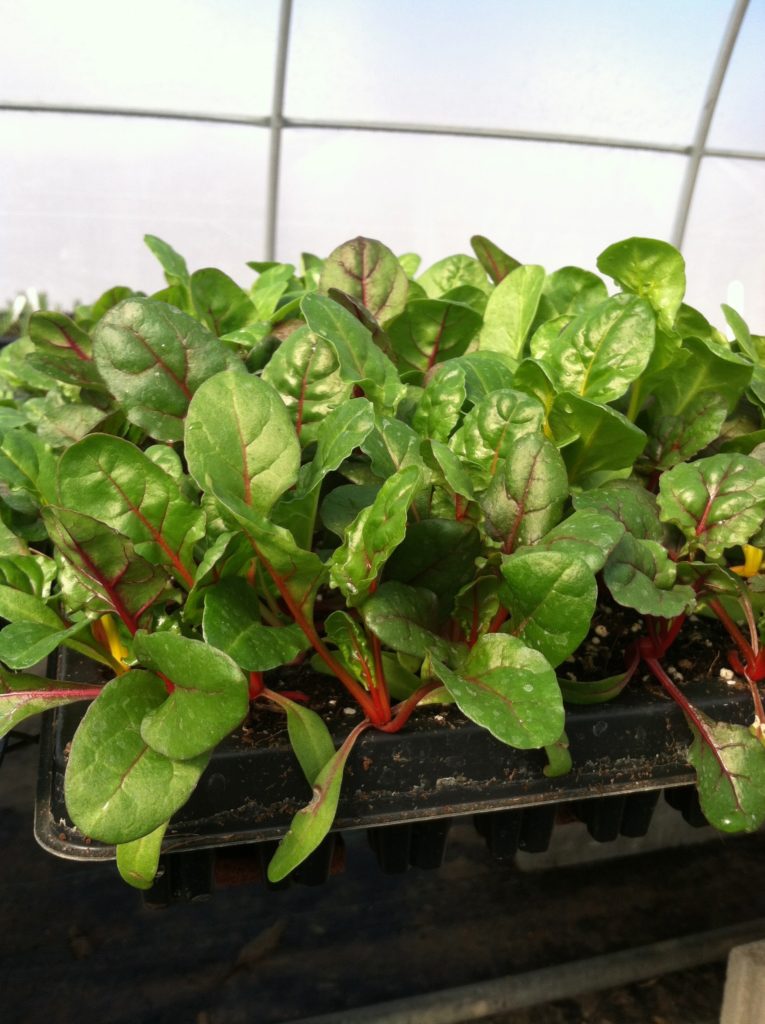
You’ve got options…
Shop lights – Fluorescents: You can easily build a light shelf with a shop lights and fluorescent bulbs which can often be purchased used if you’re looking to save cash. Livonia lighting has good ones that can be found your local hardware store or on Craigslist. The most common bulb type is T8. (They come in T5, T8, and T12 – the smaller the number, the smaller and more efficient the bulb.)
You’ll learn quickly that you have many choices when it comes to selecting light type. You’ll want to pay attention to the color temperature, measured in degrees of Kelvin (the number next to the “K” on the bulb).
Daylight bulbs with higher K rating give off more blue light and are good for almost all plants in the vegetative state or that don’t require flowering to fruit (like kale, broccoli, lettuce).
Soft white bulbs tend to give off more red light and are better for plants that flower like your summer fruits (tomatoes, peppers, etc.)
The sun is a giant full spectrum ball of fire. It gives off all of the types of light that plants need. Because transplants are the vegetative state of the plant (regardless of whether they will fruit or not), more blue light is better. All plants do well with full a full spectrum of light. I would recommend having one soft white bulb for every two daylight fixtures in a pattern like this. 4’ Fixture + 2 bulbs = about $30

Shop lights – LEDs: Fluorescent lights are getting harder to find at hardware store and LEDs are now much more affordable than they were even a couple of years ago. Consider investing in LEDs – the bulbs last 5 times longer and are “integrated” into the fixture (fluorescent fixtures and bulbs usually have to be purchased separately). They’re also more energy efficient. Hooray!
Most shop light LEDs available in hardware stores are 4000K which is suitable, although not necessarily ideal, for seedlings. There is a bit more versatility with fluorescents in terms of color temperatures. The number of lumens (light intensity) matters as well. You should be able to get away with three to four LED fixtures per shelf. 4’ Fixture with integrated bulb = $35
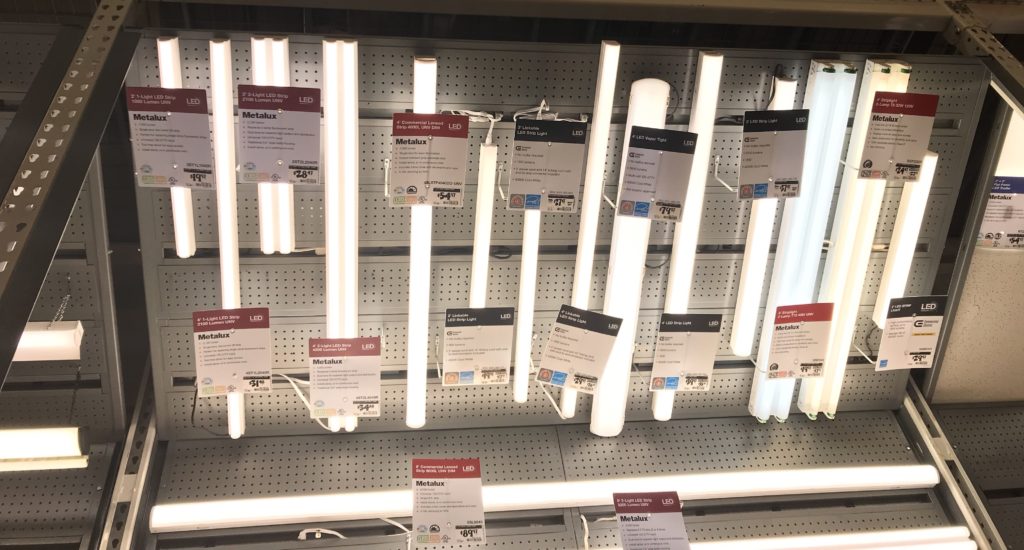
What about grow lights that I see for sale for twice the price? Companies that sell grow lights are clever — you’ll notice that they rarely put the Kelvin rating of their bulbs on their packaging (and I can venture a guess as to why!) You can go with these lights but your indoor setup will be just as effective and less expensive if you go the routes described above.
High tech option: Special LEDs, high-pressure sodium or metal halide lights are typically used by commercial growers and aren’t necessarily recommended for small-scale gardeners unless you have a very large garden as they can be very pricey. Your local grow stores can help you get what you need if you’re interested. ($200-300 per system, possibly worth it if you’re growing a lot and have a lot of space.)
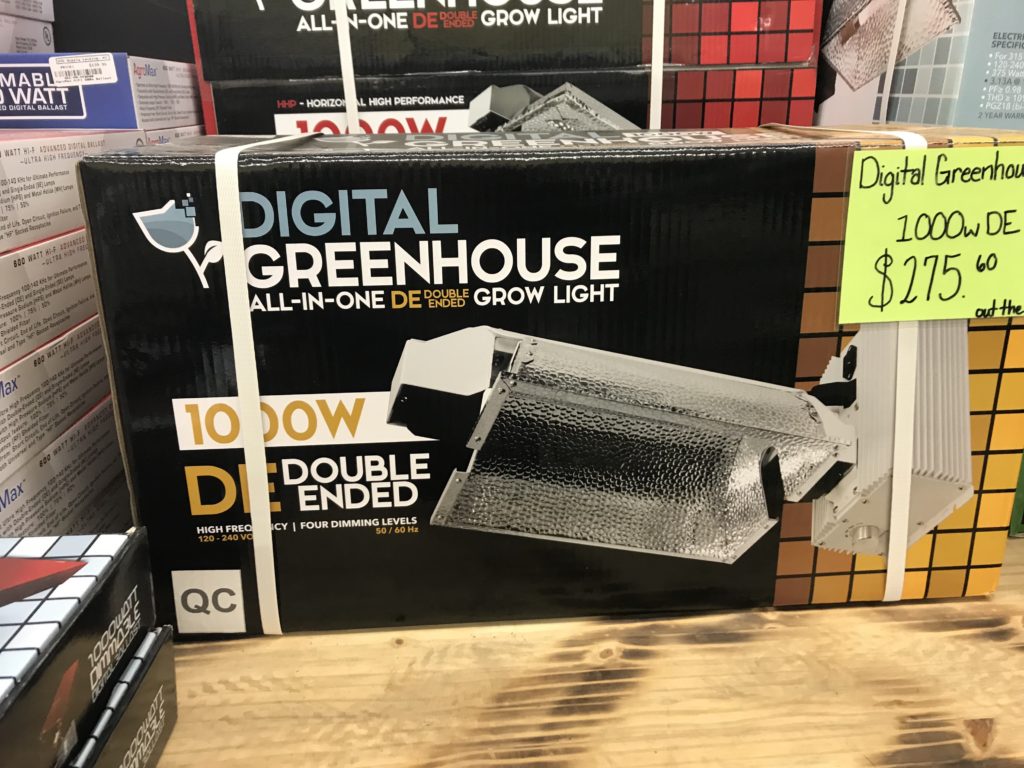
Set up: You can either hang your shop lights from chains or use some sort of system to prop the light fixture up. You’re going to want to keep the lights as close to the plants as possible without touching them for best results. Make sure that your system allows you to adjust the height of the fixture as your plants grow! (Don’t let the plants touch the light or they may burn!)
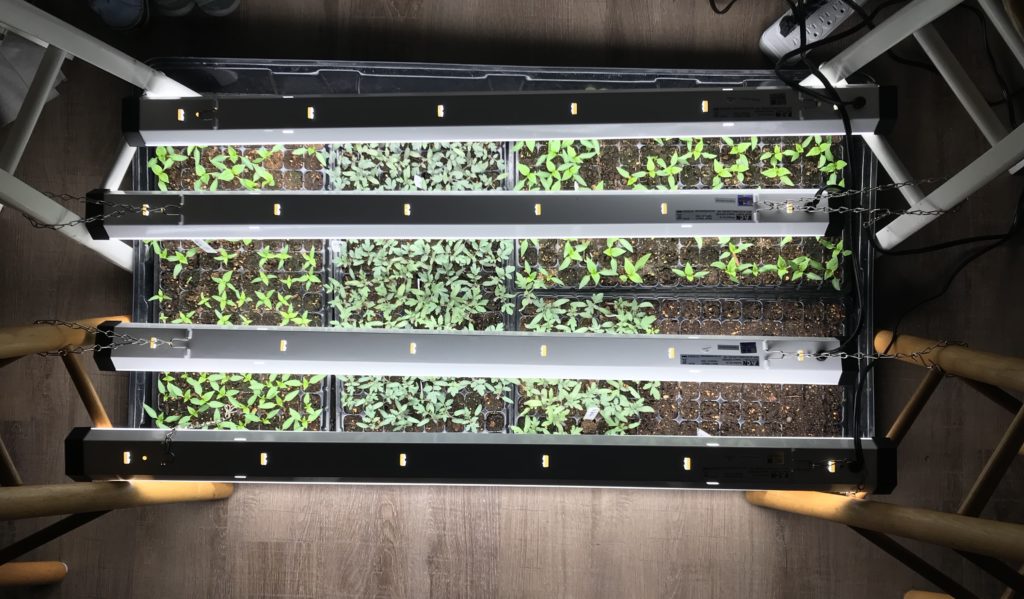

The more light the better – consider buying multiple fixtures and placing them next to each other (on one shelf I have 4 fluorescent fixtures, 8 bulbs total; on another I have 4 LED fixtures, 4 bulbs total ). This can get a little pricey but will make a significant difference in the quality of your plants.

People typically leave these types of lights on for 12-16 hours per day. Your plants will do fine with slightly less light if you’re not comfortable leaving the lights on for that long. It’s 75 degrees where my light shelf is so I only have lights on for 10 hours/day to slow things down a bit (less light and less heat = less growth).
It is not necessary to leave lights on overnight. Turning them on when you wake in the morning and off before you head to bed should be sufficient. You can also get a timer to make your life a bit easier.
High tech option: Special LEDs, high-pressure sodium or metal halide lights. These are typically used by commercial growers and aren’t necessarily recommended for small-scale gardeners unless you have a very large garden as they can be very pricey. Your local grow stores can help you get what you need if you’re interested. ($200-300 per system, possibly worth it if you’re growing a lot and have a lot of space.)
| Type | Pros | Cons | Best Use | Price (new) |
| Fluorescent Shop Light | Good color temperature range available Can often be found used | Becoming difficult to find in hardware stores Bulb and fixture must be purchased separately | If you have them lying around or can find them for cheap or free | $90-$120 |
| LED Shop Light | Bulbs last 5x longer than fluorescents and are more efficient (long term cost-savings) | Can usually only find bulbs with 4100K rating | If you plan to use your system for multiple years and have a bit more to invest | $105-140 |
| Metal Halide | Can cover a large area with bright, intense blue/full spectrum light (9’x9′) Best quality light for transplants | Pricey, difficult to accommodate in most living spaces Requires ballast and reflector to operate | If you have a large garden/small farm as well as a significant lateral space for growing (like tables in a basement) | $275-$350 (1000W bulb) |


